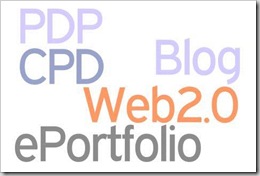As with many Web2.0 tools the emphasis on communication and collaboration means that many types of social software are becoming recognised as valuable learning tools that can be particularly useful to assess contributions of individual learners to group outcomes. Blogs can be used in this manner and have the potential to become powerful tools to provide evidence of deep learning and reflection.
Community blogs can be used to document progress towards the completion of a group task and the chronological aspects of the software are helpful in monitoring progress, achievement and contributions. Consideration of the extent to which authentication is required and indeed how it's managed will determine how this type of software is deployed within an institution.

Blogs can be used as a journal and to assist personal development planning, documenting progress towards the achievement of goals. Staff at Dumfries and Galloway College are using Blogging software in quite a structured way very effectively with learners to encourage reflection and document progress. The ability to easily upload multimedia to web-based applications is of great value in many areas of the curriculum e.g. hairdressing students can take images of both the end result and also the processes that were involved. This could be applied in the same way in food production or the construction trades.
Balancing the need for structure (to ensure performance criteria is met) and learner autonomy is a challenge for institutions. It is argued greater structure undermines the authenticity of postings and can compromise the opportunities for deep learning that Blogs can offer. It can't be denied though that using technology seems to be more attractive to learners than putting pen to paper. Perhaps in the Further Education sector providing structure is an essential ingredient if the attractions of web 2.0 technologies are to be exploited and potential benefits are to be maximised.
